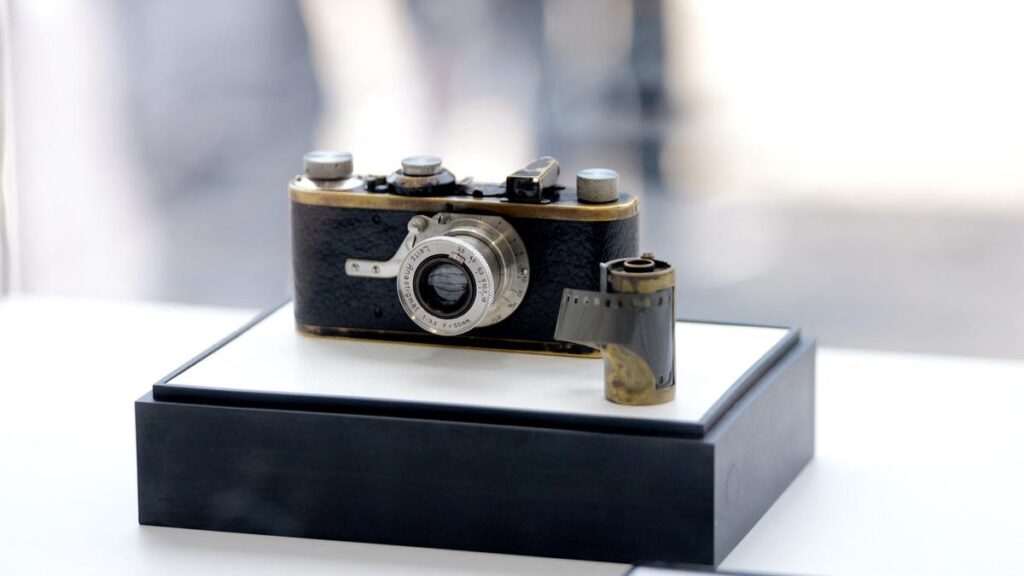If your device to capture the world before you was a compact digital camera, red eyes in your photos likely made a recurring appearance. If you went with an instant camera, you could pay a premium and wait a few minutes in order to expose a grainy photo. If you chose a regular 35mm film camera, you could shoot the photo and see how it turned out days later.
Little wonder that smartphones dealt a near death blow to many older cameras as AI-powered erasers, blur correction, dedicated night modes, and grain removal made it possible to pull high-quality photos out of both entry-level phones and premium devices.
![Film cameras come in a range of form-factors and use film rolls and canisters of different sizes [File] Film cameras come in a range of form-factors and use film rolls and canisters of different sizes [File]](https://th-i.thgim.com/public/sci-tech/technology/cb96aa/article69552000.ece/alternates/FREE_1200/AFP__20210818__9LB6KH__v1__HighRes__IndiaSociety.jpg)
Film cameras come in a range of form-factors and use film rolls and canisters of different sizes [File]
| Photo Credit:
AFP
Smartphones also provided the automated storage and backup options lacking in older cameras, cancelled out the heavy environmental cost of developing physical photos, did away with the need to constantly recharge or replace Lithium-ion batteries, and solved the weight and breakability problems of older cameras.

But, is the line dividing digital and analogue photography blurring? Young film photography fans are blending the two for an altogether new experience.
The Polaroid market is expected to nearly double in 2031 to $5.72 billion, from $2.93 billion in 2024, driven largely by the influencer economy, according to the Verified Market Research company. With features like soft focus, old-fashioned grain, mild colours, and beautifully diffused light, the cameras of yore document snapshots from the past in a dreamier way. Some consumers are also switching to traditional digital cameras to capture the beauty of their surroundings in a more organic way, sans generative AI. Others want to really sink into the shooting experience, rather than snapping images on a phone that can also interrupt you with calls and spam notifications.
![A Polaroid instant film camera on display [File] A Polaroid instant film camera on display [File]](https://th-i.thgim.com/public/sci-tech/technology/5ubvf9/article69552003.ece/alternates/FREE_1200/AFP__20180829__18O6Z0__v1__HighRes__GermanyConsumerElectronicsShowWireless.jpg)
A Polaroid instant film camera on display [File]
| Photo Credit:
AFP
But these come at a cost. Consider this for a moment: Fujifilm’s hybrid instant cameras range from ₹15,999 to ₹37,499 in price. Then, there is the luxury digital camera segment. Leica, dubbed the ‘Rolls-Royce’ of film cameras, offers the compact Leica D-Lux 8 digital camera at a price of ₹1,65,000.
For a slightly more affordable buy, the Leica SOFORT 2 hybrid instant film camera retails at ₹39,990. However, film rolls can cost thousands of rupees in India with a limited number of shots. By contrast, an entry-level smartphone that shoots perfectly usable photos costs less than ₹10,000.

Camera-makers look to the future
While nostalgia triggers buyer behaviour, camera makers are more keen to promote their new offerings, rather than older models.
Leica and Polaroid did not respond to requests for comment for this story. While Tokyo-based camera maker Canon declined to comment about demand for its older cameras, another camera maker, based out of the same city, offered a unique insight into what drives the younger generation to buy a new camera.
Young photographers are interested in modern cameras with an old-world design. In other words, film cameras may not be making a comeback, but its form-factor endures.
“We [Nikon India] have seen a significant rise in interest among younger generations who are gravitating toward cameras that blend nostalgia with modern technology,” said Sajjan Kumar, Managing Director at Nikon India. “The dominant trend is toward mirrorless cameras that offer a retro aesthetic with high performance.”
Mr. Kumar pointed out that in the early 2000s, buyers used both compact digital cameras and DSLR cameras, such as the Nikon COOLPIX series as well as the Nikon D90 DSLR series. Meanwhile, the Nikon Df (Retro DSLR) helped bridge the gap between traditional film cameras and the digital era, according to him.
On the use of advanced technologies, including AI, Mr. Kumar noted that: “We will be incorporating AI technology into our product not only to capture the high quality videos and excellent still images but also to improve the user’s workflow in ease.”
Beyond the form-factor
Today’s shutterbugs need to think of their social media strategy before buying their cameras. Many desire a camera that snaps top-quality images and shoots clear video footage that can be easily edited, uploaded, and shared in large batches.
![New technologies, such as instant photo printers, allow film photography to live on in new ways [File] New technologies, such as instant photo printers, allow film photography to live on in new ways [File]](https://th-i.thgim.com/public/sci-tech/technology/bw5xmv/article69552005.ece/alternates/FREE_1200/AFP__20220605__903132460__v2__HighRes__LatestConsumerTechnologyProductsOnDisplayAtAn.jpg)
New technologies, such as instant photo printers, allow film photography to live on in new ways [File]
| Photo Credit:
Getty Images via AFP
Then, there are the budget-conscious photographers. For them, app storefronts offer virtual filters or film camera simulators that let device owners shoot from their own phones with added effects such as light leaks, graininess, or discolouration to mimic the 35mm film aesthetic.
Some of these apps have been downloaded over 10 million times, unlocking retro-style images without burning a hole in buyers’ pockets. Virtual Polaroid frames and instant photo printers also let users turn a smartphone photo into passable film shots that can be shared both online and offline.
Photography — whether through traditional film cameras, hybrid instant cameras, mirrorless digital cameras with film camera-inspired designs, fully mechanical toy cameras, or even 35mm film apps — continues to find innovative ways to thrive.
Published – May 08, 2025 12:12 pm IST

